Buy Okra(Bhindi) Seeds from various brands at DesiKheti:
Buy Advanta Okra (Bhindi) Seeds Online
Buy Agroisia Okra (Bhindi) Seeds Online
Buy Ankur Seeds Okra (Bhindi) Seeds Online
Buy Bioseed Okra (Bhindi) Seeds Online
Buy Dhaanya Seeds Okra (Bhindi) Seeds Online
Buy Dhanvi Seeds Okra (Bhindi) Seeds Online
Buy DuFlora Okra (Bhindi) Seeds Online
Buy East West Okra (Bhindi) Seeds Online
Buy Enza Zaden Okra (Bhindi) Seeds Online
Buy Fito Okra (Bhindi) Seeds Online
Buy HM Clause Okra (Bhindi) Seeds Online
Buy Indo American Seeds Okra (Bhindi) Seeds Online
Buy Indus Seeds Okra (Bhindi) Seeds Online
Buy JK Seeds Okra (Bhindi) Seeds Online
Buy Kalash Okra (Bhindi) Seeds Online
Buy Kanakadhaara Seeds Okra (Bhindi) Seeds Online
Buy Kaveri Seeds Okra (Bhindi) Seeds Online
Buy Konico Seeds Okra (Bhindi) Seeds Online
Buy Mahyco Okra (Bhindi) Seeds Online
Buy Max Seeds Okra (Bhindi) Seeds Online
Buy Namdhari Seeds Okra (Bhindi) Seeds Online
Buy Nath Seeds Okra (Bhindi) Seeds Online
Buy Nirmal Seeds Okra (Bhindi) Seeds Online
Buy Nongwoo Okra (Bhindi) Seeds Online
Buy BASF Nunhems Okra (Bhindi) Seeds Online
Buy Nuziveedu Seeds Okra (Bhindi) Seeds Online
Buy Pahuja Seeds Okra (Bhindi) Seeds Online
Buy Pan Seeds Okra (Bhindi) Seeds Online
Buy PHS Okra (Bhindi) Seeds Online
Buy Premium Seeds Okra (Bhindi) Seeds Online
Buy Sakata Okra (Bhindi) Seeds Online
Buy Sarpan Seeds Okra (Bhindi) Seeds Online
Buy Star Field Okra (Bhindi) Seeds Online
Buy Sungro Seeds Okra (Bhindi) Seeds Online
Buy Syngenta Okra (Bhindi) Seeds Online
Buy Takii Okra (Bhindi) Seeds Online
Buy Tokita Okra (Bhindi) Seeds Online
Buy Unisem Okra (Bhindi) Seeds Online
Buy Univeg Okra (Bhindi) Seeds Online
Buy US Agriseeds Okra (Bhindi) Seeds Online
Buy Vagro Seeds Okra (Bhindi) Seeds Online
Buy VNR Okra (Bhindi) Seeds Online
Okra (Lady Finger, Bhendi or Bhindi ) is one of India's most widely used vegetables. Bhindi is mainly grown for its soft, immature pods. Okra is eaten not just in India but worldwide. Okra can be used in various dishes, such as curries, gumbos, and stews. The okra pods can be refrigerated or dried and utilized in the off-season.
Bhendi has a lot of nutrients. It contains many minerals and vitamins A and B. High protein and fibre can be found in bhendi pods. Furthermore, Bhindi seeds are high in protein. Bhindi is a great way to get iodine, which helps with goiter treatment.
Beyond the kitchen, bhendi has many uses. Dried bhendi skins and fibres are used to make paper, cardboard, and textiles. Bhendi root and stem are used during the jaggery-making process to clarify cane juice. A 20–40% oil content is found in okra seeds. Small-scale oil production has been accomplished with Bhindi seeds. Bhindi seeds can be ground and roasted to make a caffeine-free coffee substitute.
Bhindi production increased significantly worldwide, from 1.91 million tons in 1973 to 11.2 million tons in 2022, accounting for an average yearly growth rate of 3.83%. India is the largest lady finger producer in the world. Approximately 6 million tons of Bhendi are produced annually in India. India accounts for over 60% of the world's total okra production.
In India, Gujarat is the leading state in bhendi production, With 15.89% of the country's total production. West Bengal, Bihar, Madhya Pradesh, Odisha, and Chhattisgarh are the other leading states in Bhendi production.
Botanical Name: Abelmoschus esculentus
Family: Malvaceae
Genus: Abelmoschus
Okra Seeds in Hindi: भिंडी के बीज (Bhindi ke beej)
Okra Seeds in Bengali: ধেন্দশ বীজ (Dhendosha bij)
Okra Seeds in Telugu: బెండకాయ విత్తనాలు (Bendakaya vittanalu)
Okra Seeds in Tamil: வெண்டைக்காய் விதைகள் (Vendaikkai vidhaigal)
Okra Seeds in Kannada: ಬೆಂಡೆಕಾಯಿ ಬೀಜಗಳು (Bendekayi beejagalu)
Okra Seeds in Malayalam: വെണ്ട വിത്തുകൾ (Venda vithukal)
Okra Seeds in Gujarati: ભીંડોના બીજ (Bhindo na bij)
Okra Seeds in Marathi: भेंडीचे बीज (Bhendiche beej)
Okra Seeds in Punjabi: ਭਿੰਡੀ ਦੇ ਬੀਜ (Bhindi de bij)
Okra Seeds in Odia: ଭେଣ୍ଡି ବୀଜ (Bhendi bij)
Okra Seeds in Assamese: বিহিনিৰ বীজ (Bihinir bij)
Climate for Okra Cultivation
Bhindi is a tropical and subtropical crop. Bhindi plants need a growing season free of frost. The Bhindi crop produces well in warm, humid climates. Compared to summer, bhindi plants grow more vigorously during the rainy season.
Bhindi grows best when the temperature is between 24 and 27°C. Below 20°C, okra seeds will not germinate. Temperatures beyond 42°C have the potential to cause flower loss and reduce bhindi pod yield.
Soil for Okra Cultivation
Okra needs well-drained soils that are high in organic matter for optimum development. Bhendi grows best in clay loam soils. Bhendi can also be grown in sandy loam soils. Bhendi roots are sensitive to too much moisture. Therefore, it is essential to prevent water stagnation.
A soil pH of between 6 and 6.8 is optimum for bhendi production. Additionally, bhendi may grow in salty soils with an EC value as high as six milli mhos per cm.
Land Preparation
For a bhindi crop to be successful, the land must be adequately prepared. The land should be ploughed two or three times to guarantee proper soil tilth. Add 25 t/ha of well-decomposed FYM to the soil in the preparation stage. To sow the bhindi seeds, make raised beds or ridges and furrows. In heavy soils, sow bhindi seeds on ridges. Sowing on ridges avoids waterlogging and promotes strong root development in bhindi plants.
Okra Seeds and Propagation Material
- Selection of okra Variety: Select okra cultivars according to climate, soil type, irrigation capabilities, pest and disease resistance, and local market demand.
- Purchasing High-Quality Okra Seeds: Only purchase Okra seeds from reputable and verified vendors. Desikheti provides high-quality okra seeds in a handy assortment that can be delivered to your doorstep.
- Okra seed rate:
Kharif Crop: 5 to 6 kg/acre
Summer Harvest: 8–10 kg/acre
- Okra Seed Treatment: Commercially available hybrid bhindi seeds are typically chemically treated. In all other situations, soak the bhindi seeds for six hours in a 0.2% Bavistin solution.
Time of sowing okra seeds
The best time to plant bhindi seeds varies considerably based on the climate, the type of okra, and the temperature needed for growth. The Bhindi crop is sown in North India between February and March in the summer. In South India, bhindi is usually sown as the main crop in November. The exact month of sowing bhendi depends on the region.
Generally, the sowing time is as follows:
- Kharif Crop: June to July
- Spring-Summer Crop: February to March
Technique for sowing okra seeds
Different techniques can be used to sow bhendi seeds depending on regional practices. Raised beds or ridges and furrows are common methods of sowing okra seeds. Okra seeds are typically sown in pits in West Bengal. Bhendi seeds can be soaked in water for 12 to 24 hours before sowing to improve germination. Broadcasting, line sowing, and dibbling are three methods of sowing lady finger seeds. In the summer, when there is less vegetative development, okra seeds are often planted 30 x 30 cm apart.
With more vigorous growth during the Kharif season, the spacing is:
- Branching type: 60 x 30 cm
- Non-Branching type: 45 x 30 cm
Management of Nutrients in Okra cultivation
The amount of organic manure used, crop variety, geography, and soil quality affect how much fertilizer is required for bhindi crops. Typically, a basal application of 20–30 t/ha of farmyard manure (FYM) is applied during the final ploughing. Generally, 100 kg of nitrogen (N), 60 kg of phosphorus (P), and 60 kg of potassium (K) are applied per hectare. One-third of the nitrogen and the entire quantity of potassium and phosphorus should be administered as a basal dose. Two split doses of the remaining nitrogen can be applied four weeks after sowing and at the flowering and fruiting periods. Splitting the nitrogen application at every third picking can enhance bhindi yield, increase the number of harvests, and maintain good pod size even toward the last harvests.
Irrigation management in Okra farming
Irrigation frequency in bhendi fields varies according to soil type and season. The first watering should be administered following bhindi seed germination. The field should receive irrigation every four to five days during the summer. Extra irrigation might not be required in regions with heavy rainfall during the rainy season, provided the water is evenly dispersed. Higher yields are obtained using drip irrigation as opposed to furrow irrigation. Pod quality and yield can be decreased by moisture stress during the fruit-setting period in bhindi crops.
Pest and Disease Management in okra cultivation
Common Pests of Okra
Bhendi Shoot and Fruit Borer / Spotted Fruit Borer (Earias vitella, E. insulana)
- Caterpillars bore into the developing bhendi shoots and fruits. These holes are clogged with excreta. bhendi pods with infestations may shed early.
- Severe borer infestation can cause young bhendi seedlings to topple over and die. The bhendi leaves also wither and dry. It also causes significant damage to bhendi pods.
Jassids (Amrasca biguttula biguttula)
- Jassids are little, wedge-shaped, pale green bugs
- They cause marginal yellowing, cupping, and drying of leaves by sucking sap from the undersides of okra leaves.
- Intense hopper burn causes defoliation, stunted plants, and poor fruiting in bhindi plants, especially in the summer.
Whitefly (Bemisia tabaci)
- Both the nymphs and adult whiteflies suck the sap from the underside of bhendi leaves, shoots, and fruits, and this leads to a loss of plant lustre.
- The yellow vein mosaic virus, which causes chlorotic patches, erratic yellowing, and the development of sooty mold on bhendi leaves, can be spread by whitefly adults.
Red Spider Mite (Tetranychus telarius)
- Infested bhendi leaves develop characteristic blotches that turn white and then brown.
- Eventually, affected leaves start to dry out and turn discoloured.
Bhendi Fruit Borer (Helicoverpa armigera)
- It feeds on flowers and bore circular holes in bhendi fruits, with larvae thrusting only part of their body inside the fruit to feed.
Stem Weevil (Pempherulus affinis)
- Grubs feed on bhendi plants, causing galls in the petiole and stem. Adults consume terminal bhendi shoots and leaf buds.
Leaf Roller (Sylepta derogata)
- Defoliation results in bhindi plants from caterpillars rolling the leaves, peeling the chlorophyll and feeding within.
Semilooper (Anomis flava)
- Defoliation is caused by caterpillars feeding on okra leaves.
Aphid (Aphis gossypii)
- Aphids result in black sooty mold formation due to honeydew secretion.
- Aphids infest tender shoots and the undersides of bhindi leaves, resulting in curled and crinkled leaves and slowed growth.
Root Knot Nematode
- It infects okra roots and causes galls, early leaf fall, wilting, and decreased growth and fruit production.
- Typically, symptoms manifest as distinct patches within the field.
Common Diseases of Okra
Yellow Vein Mosaic Virus
- Vein clearing, or the complete network of veins in the leaf blade turning yellow, is the typical symptom of this disease.
- Severe infections cause younger leaves to turn yellow, diminish in size and plants to become stunted.
- This severe disease, spread by whiteflies, can significantly impact flowering and fruit development in bhindi plants.
- Depending on the disease's incidence, yield losses in bhendi crops can range from 50% to 100%.
Powdery Mildew (Erysiphe cichoracearum)
- Older leaves and stems of lady finger plants develop white, powdery patches on the upper surfaces.
- The fungus growth turns brown and causes the okra leaves to wither and fall. Bhindi Fruits and stems are also susceptible to the infection.
Cercospora Leaf Spot (Cercospora abelmoschi, Cercospora malayensis)
- On the lower leaf surfaces of the Bhindi plant, C. abelmoschi causes sooty black, angular spots, and C. malayensis causes brown, irregular spots.
- Both types can attack ripe lady finger pods, resulting in blackish patches, and cause significant defoliation, particularly in humid conditions.
Fusarium Wilt (Fusarium oxysporum f.sp. vasinfectum)
- Yellowing and stunting of bhindi plants is a common symptom of this infestation.
- Wilting and rolling of bhindi leaves occur, and dark brown vascular discolouration can be observed.
Enation Leaf Curl (Bhendi Enation Leaf Curl Virus)
- This viral disease causes complete Crop failure.
- It affects all stages of the plant, reducing growth and yield.
- Symptoms include warty, rough-textured, thick and leathery leaves, upward curling, twisting of stems and branches, and leaves. Infected lady finger pods are unfit for consumption.
Damping Off (Pythium indicum)
- This disease affects okra seedlings both before and after emergence. Affected seedlings develop lesions close to the collar region.
- Affected okra seedlings may also topple down on the ground and collapse.
Weed Management in Okra cultivation
For the best growth and productivity, bhindi farming requires careful attention to weed management. The first weeding is done when the bhindi seedlings are around two weeks old, and the next weedings are done every 25 days.
Frequent hoeing, weeding, and earthing up are necessary to maintain the crop weed-free throughout the crucial early stages. Usually, three or four weedings are needed in total.
Harvesting of Okra Pods
Okra pods can be harvested 45 to 65 days following seeding, depending on the cultivar and season. Depending on the Bhindi hybrid variety and market demands, there are differences in the size and stage of pod harvest. Generally, medium-sized, fragile (7–10 cm long) okra pods are harvested, which can be quickly snapped off the plant. Bhindi pods of 6-8 cm long are preferred for export purposes. This pod size is usually attained by 5-6 days after the opening of a flower. Harvesting is done on alternate days with a knife or by bending the pedicel with a jerk. It is advisable to wear cotton cloth gloves to shield fingers from the prickly effect of fruit hairs. It is advisable to harvest in the morning hours since fruit hairs will be soft.
Okra Crop Yield
- 6.0 to 8.0 tons/hectare for summer crop
- 10 to 12.5 tons per hectare for the Kharif crops.
Yield of Hybrid varieties ranges between 15 to 22 tons/hectare.
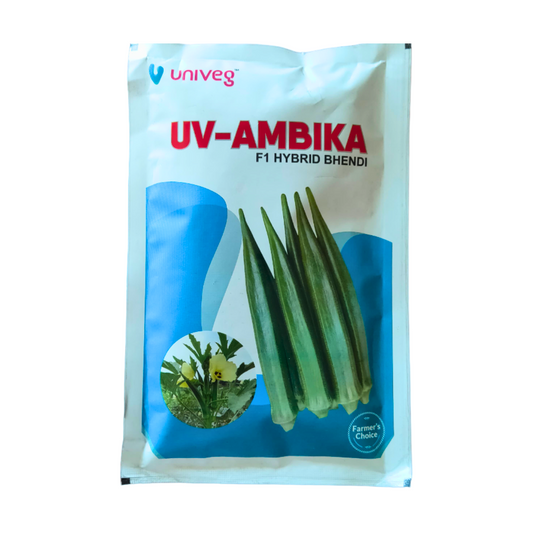
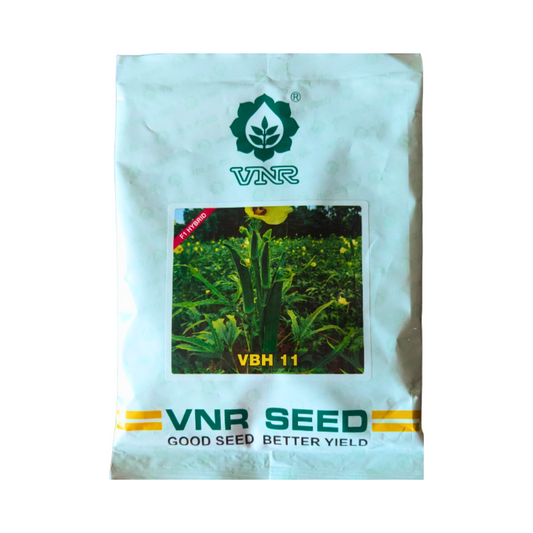
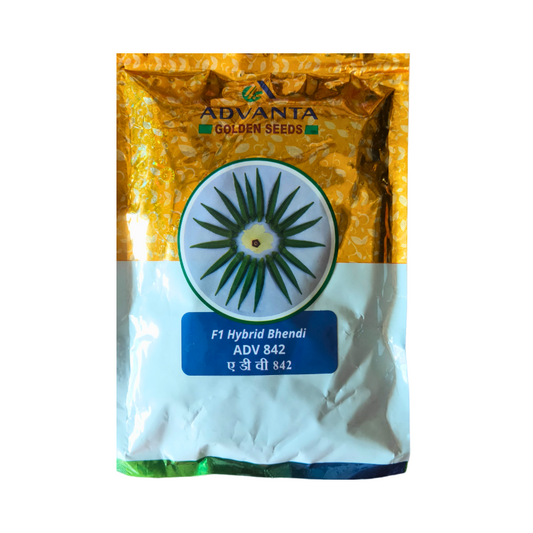
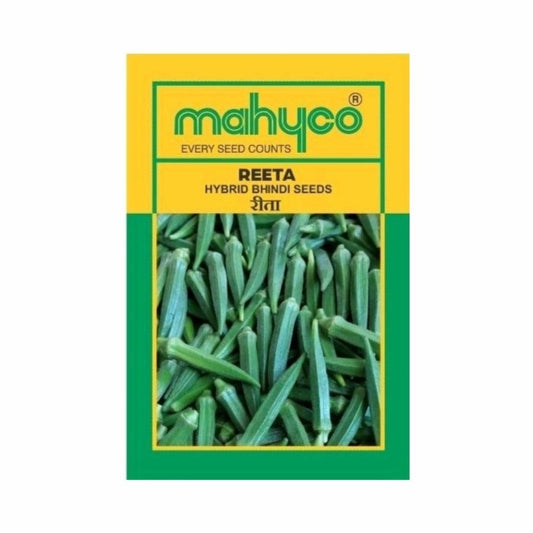 Sold out
Sold out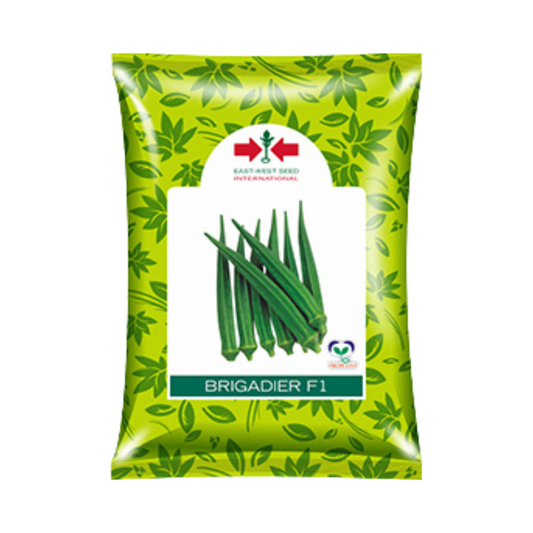 Sold out
Sold out

 Sold out
Sold out
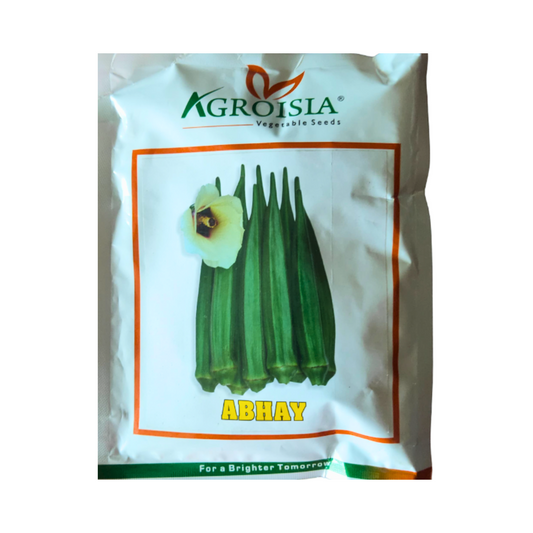
 Sold out
Sold out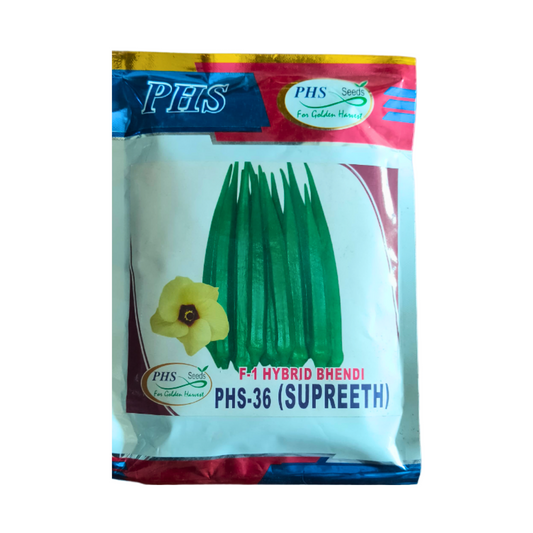 Sold out
Sold out
 Sold out
Sold out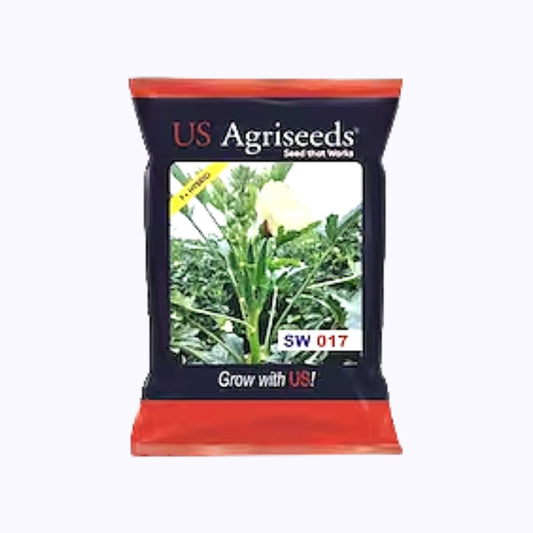 Sold out
Sold out

 Sold out
Sold out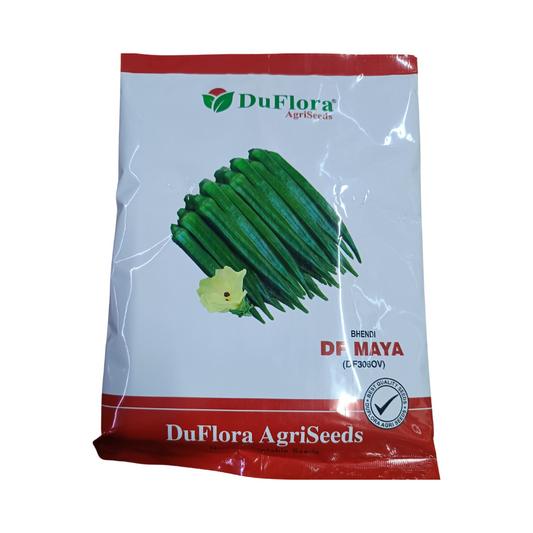
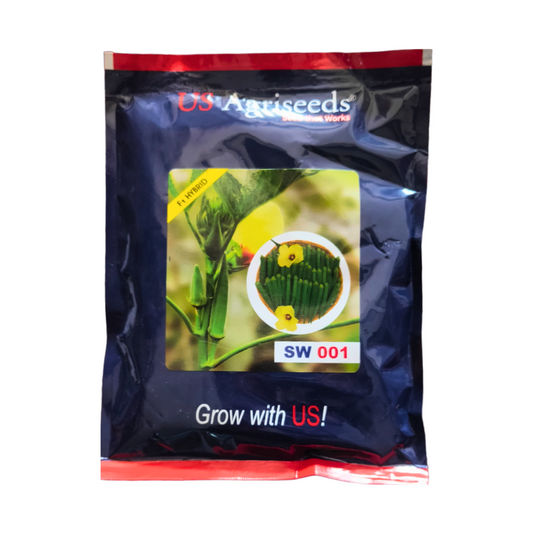 Sold out
Sold out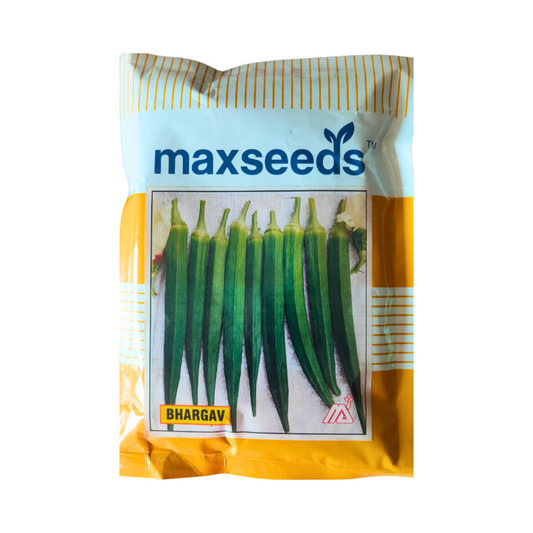
 Sold out
Sold out























